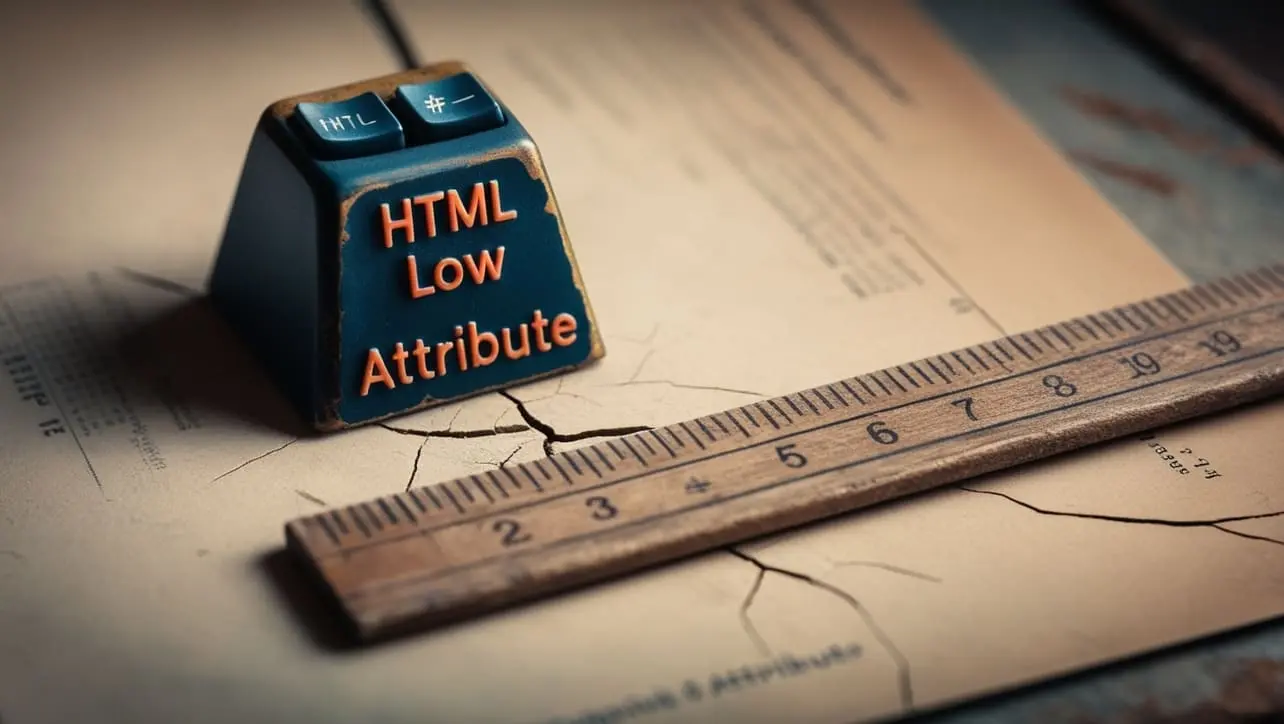
HTML Topics
- HTML Intro
- HTML Basic
- HTML Editors
- HTML CSS
- HTML Tags
- HTML Deprecated Tags
- HTML Events
- HTML Event Attributes
- HTML Global Attributes
- HTML Attributes
- abbr
- accept
- accept-charset
- accesskey
- action
- align
- alt
- archive
- as
- async
- autocapitalize
- autocomplete
- autofocus
- autoplay
- axis
- bgcolor
- border
- cellpadding
- cellspacing
- char
- charoff
- charset
- checked
- cite
- class
- classid
- codebase
- codetype
- color
- cols
- colspan
- compact
- content
- contenteditable
- controls
- coords
- crossorigin
- data
- data-*
- datetime
- declare
- default
- defer
- dir
- dirname
- disabled
- download
- draggable
- enctype
- enterkeyhint
- for
- form
- formaction
- formenctype
- formmethod
- formnovalidate
- formtarget
- frame
- frameborder
- frameset
- headers
- height
- hidden
- high
- href
- hreflang
- hspace
- http-equiv
- id
- inert
- inputmode
- ismap
- kind
- label
- lang
- list
- loop
- low
- max
- maxlength
- media
- method
- min
- multiple
- muted
- name
- novalidate
- onabort
- onafterprint
- onbeforeprint
- onbeforeunload
- onblur
- oncanplay
- oncanplaythrough
- onchange
- onclick
- oncontextmenu
- oncopy
- oncuechange
- oncut
- ondblclick
- ondrag
- ondragend
- ondragenter
- ondragleave
- ondragover
- ondragstart
- ondrop
- ondurationchange
- onemptied
- onended
- onerror
- onfocus
- onhashchange
- oninput
- oninvalid
- onkeydown
- onkeypress
- onkeyup
- onload
- onloadeddata
- onloadedmetadata
- onloadstart
- onmousedown
- onmousemove
- onmouseout
- onmouseover
- onmouseup
- onmousewheel
- onoffline
- ononline
- onpagehide
- onpageshow
- onpaste
- onpause
- onplay
- onplaying
- onpopstate
- onprogress
- onratechange
- onreset
- onresize
- onscroll
- onsearch
- onseeked
- onseeking
- onselect
- onstalled
- onstorage
- onsubmit
- onsuspend
- ontimeupdate
- ontoggle
- onunload
- onvolumechange
- onwaiting
- onwheel
- open
- optimum
- pattern
- placeholder
- popover
- popovertarget
- popovertargetaction
- poster
- preload
- readonly
- rel
- required
- reversed
- rows
- rowspan
- sandbox
- scope
- selected
- shape
- size
- sizes
- span
- spellcheck
- src
- srcdoc
- srclang
- srcset
- start
- step
- style
- tabindex
- target
- title
- translate
- type
- usemap
- value
- width
- wrap
- HTML Comments
- HTML Entity
- HTML Head
- HTML Form
- HTML IndexedDB
- HTML Drag & Drop
- HTML Geolocation
- HTML Canvas
- HTML Status Code
- HTML Language Code
- HTML Country Code
- HTML Charset
- MIME Types
HTML low Attribute

Photo Credit to CodeToFun
🙋 Introduction
The low attribute in HTML is used to define the lower bound of a numeric input field.
It is specifically designed for <input type="number"> elements and allows developers to set a minimum value that users can input.
This attribute helps establish limits on numeric data entry and ensures that users stay within a predefined range.
🎯 Purpose of low
The primary purpose of the low attribute is to provide a minimum value constraint for numeric input fields.
By setting the low attribute, you can guide users to enter values that are equal to or greater than the specified lower bound.
💎 Values
The low attribute accepts numerical values as its input. This value represents the minimum allowed value for the associated numeric input field.
When users try to input a value lower than the specified low value, the browser will prevent the form from being submitted until a valid value is entered.
📄 Example
Let's look at a simple example of how to use the low attribute in an HTML form:
<form>
<label for="quantity">Quantity:</label>
<input type="number" id="quantity" name="quantity" low="1">
<input type="submit" value="Submit">
</form>🧠 How it Works
In this example, the low attribute is set to 1 for the quantity input field. This means that users must enter a quantity equal to or greater than 1.
🔄 Dynamic Values with JavaScript
You can dynamically set the low attribute using JavaScript.
This can be useful when you need to update the lower bound based on certain conditions or user interactions. Here's a brief example:
<script>
// Dynamically set the low attribute for an input field
document.getElementById("dynamicQuantity").low = "5";
</script>🧠 How it Works
In this script, the low attribute is dynamically set to 5 for an input field with the id dynamicQuantity. This can be beneficial when you want to adjust the lower bound based on dynamic factors within your web application.
🏆 Best Practices
- Use the
lowattribute when you need to enforce a minimum value constraint for numeric input fields. - Clearly communicate to users the acceptable range for the input field to provide a better user experience.
- Always validate user input on the server-side to ensure security and data integrity.
🎉 Conclusion
The low attribute is a valuable tool for controlling the lower bound of numeric input fields in HTML forms.
By utilizing this attribute, you can enhance the precision and reliability of data collected through your web forms.
👨💻 Join our Community:
Author

For over eight years, I worked as a full-stack web developer. Now, I have chosen my profession as a full-time blogger at codetofun.com.
Buy me a coffee to make codetofun.com free for everyone.
Buy me a Coffee












If you have any doubts regarding this article (HTML low Attribute), please comment here. I will help you immediately.